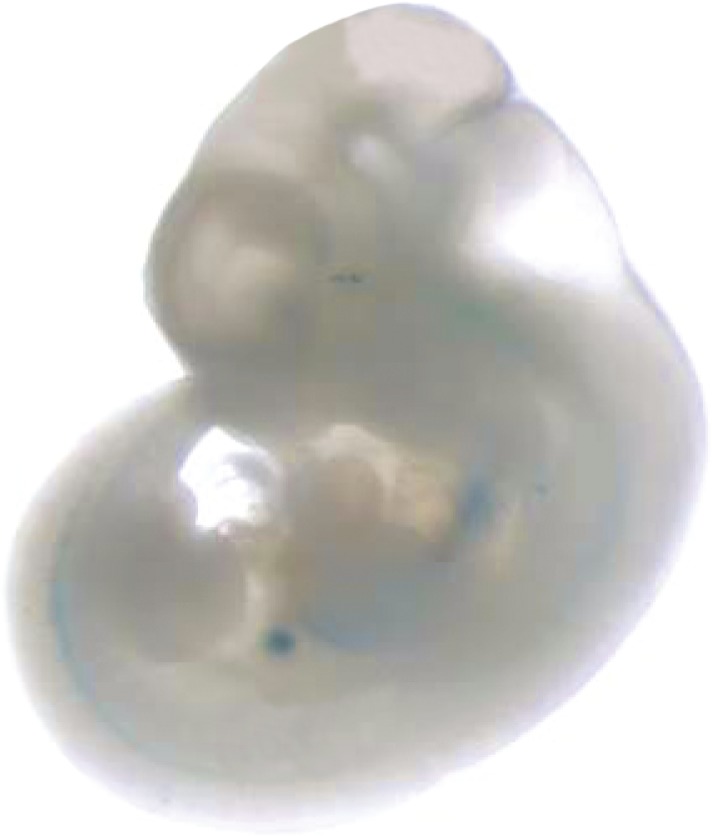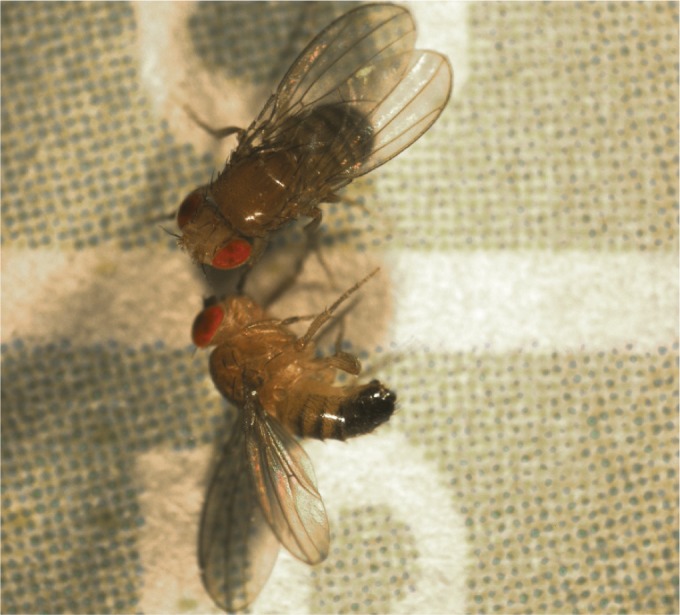Methane emissions associated with natural gas production in the United States

Natural gas well in Texas. ©iStockphoto/sdphotography.
Significant uncertainty surrounds the levels of methane emissions associated with natural gas production in the United States. National estimates of methane emissions from natural gas production have generally relied on engineering models and measurements made up to 1 km downwind of the drill site. In conjunction with an environmental group and nine natural gas companies, David Allen et al. (pp. 17768–17773) directly measured methane emissions at 190 onshore natural gas production sites throughout the United States, including 27 wells being prepared for continuous production and 489 wells that underwent hydraulic fracturing. The authors found that the emissions measured at wells during completion varied over a large range but were, on average, nearly 50 times lower than previously estimated by the Environmental Protection Agency (EPA). By contrast, measurements of methane emissions from equipment on wells in routine production were comparable to or higher than EPA estimates. The authors used the measurements of methane emissions to estimate that the nation’s total annual methane emissions from well completions, pneumatic devices, chemical pumps, and equipment leaks are between 757 and 1,157 Gg, comparable to the EPA estimate of approximately 1,200 Gg. The findings may aid future policy decisions and research on the development and use of natural gas, according to the authors. — N.Z.
Chemical relative of RNA may provide genetic material for artificial cell
Recent advances in molecular biology offer the intriguing possibility that simple artificial cells could be created using a self-replicating cell membrane and a self-replicating genetic polymer. Although a number of studies have suggested viable approaches to grow and divide model protocell membranes, self-replicating genetic material has yet to be realized. Noting that the early Earth’s first cells lacked enzymes and likely copied their RNA via spontaneous reactions, Shenglong Zhang et al. (pp. 17732–17737) studied a close chemical relative of RNA known as 3'-phosphoramidate-DNA to uncover the mechanisms of non-enzymatic replication. The authors found that although short regions of this polymer can be copied, the error rate is prohibitively high. However, the authors found that replacing a single atom in one of the four nucleotides both increases the molecule’s poly-merization rate and restores the copying accuracy. The findings may help develop techniques to chemically copy RNA and suggest that 3'-phosphoramidate-DNA can potentially serve as a genetic material for artificial biological systems, according to the authors. — T.J.
Adaptive benefits of suicidal reproduction

Three species of Australian insectivorous marsupials with relatively high male postmating survival: Dasyurus viverrinus, the eastern quoll (Top) Ningaui timaleayi, the Pilbara ningaui (Bottom Left), and Sminthopsis macroura, the stripe-faced dunnart (Bottom Right).
A radical reproductive strategy called semelparity, in which males die after mating following a rise in stress hormone levels during the mating season and immune system collapse, is common among four genera of insectivorous marsupials. To determine whether this rare form of suicidal reproduction confers adaptive benefits from an evolutionary perspective, Diana Fisher et al. (pp. 17910–17914) used comparative phylogenetic analysis to study the marsupials’ life history strategies in Australia, South America, and Papua New Guinea. The authors suggest that as the marsupials spread across high latitudes, the seasonal availability of their arthropod prey increased, leading to short annual breeding seasons; females tend to mate during periods of prey abundance to help wean their offspring. The short breeding seasons likely heightened reproductive competition among males, who face a tradeoff in investing energy in either copulation or postmating survival. But, the authors found, the predictability of prey abundance alone does not explain suicidal reproduction: Among marsupials with low postmating male survival, semelparous species also have large testicles relative to body size, suggesting that females likely intensify sexual competition among males through short annual mating periods and promiscuous mating. According to the authors, semelparity among mammals may have evolved as an adaptive response to sexual selection imposed by females. — P.N.
Direct evidence for stretch enhancers in human DNA

Human islet stretch enhancer confers reporter transgene expression (blue) in the pancreatic primordium of a mouse embryo.
Enhancers are regions of the genome known to control gene expression, and researchers have long explored whether these regulatory DNA elements can contribute to disease risk. Stephen Parker et al. (pp. 17921–17926) performed high-throughput experiments and computational analysis to uncover the regulatory landscape of the genomes of human pancreatic islet cells and nine other cell types from the ENCODE project, an international consortium aimed at creating an inventory of the human genome’s functional elements. The authors report that most of the enhancers are small—with a median size of 0.8 kb—though some large enhancers—of 3 kb or greater in size—occur less frequently, their location varying in a tissue-specific manner and often overlapping with other regulatory regions. The longer the “stretch” enhancers, the authors report, the higher their tissue-specificity and the expression levels of nearby genes; for example, islet-specific stretch enhancers were located closer to, or within, genes implicated in islet function than to housekeeping genes. More importantly, the authors found that disease-related genetic variations identified in genome-wide association studies are often enriched in stretch enhancers in cell types associated with the relevant diseases, suggesting that stretch enhancers might influence human disease risk. According to the authors, the findings provide direct evidence for the presence of stretch enhancers, which might serve as molecular runways for organizing gene expression in several human cell types. — P.N.
Thrust during swimming gives jellyfish competitive advantage
Gelatinous zooplankton, a group of marine animals that includes jellyfish, can take over perturbed ecosystems. How these fragile animals outcompete highly mobile visual predators, such as fish, remains unclear, because studies of propulsive performance suggest that jellyfish are inefficient swimmers. Brad Gemmell et al. (pp. 17904–17909) reexamined the energetics of jellyfish propulsion and identified a mechanism that allows the animals to travel, on average, 30% farther per swimming cycle, while reducing the metabolic energy expended by swimming muscles. Using computational fluid dynamics and laboratory experiments, the authors demonstrated that a vortex ring beneath the bell generates positive pressure and extra thrust during the relaxation phase of swimming, providing a boost that traditional metrics fail to capture. The authors then quantified the gain with an ecologically relevant method known as net “cost-of-transport,” finding a 48% reduction in metabolic demand that likely explains how jellyfish achieve the requisite size to survive prey encounters. The results provide a physical basis that helps explain the ecological success of many gelatinous zooplankton species and may contribute to future biologically inspired technologies aimed at low-energy propulsion, according to the authors. — T.J.
Fruit fly model for traumatic brain injury

Fruit flies exhibit human-like symptoms of TBI following mechanical impact. Image courtesy of Grace Boekhoff-Falk (University of Wisconsin, Madison, WI).
The symptoms of traumatic brain injury (TBI) manifest differently depending on the location and severity of the injuries as well as genetic and environmental factors. Because the heterogeneity of TBI outcomes has significantly impeded the development of treatments, Rebeccah Katzenberger et al. (pp. E4152–E4159) developed a model of TBI in Drosophila melanogaster that might enable researchers to exploit the experimental tools that exist for flies in finding suitable treatments for TBI. Demonstrating the model’s applicability, the authors describe experiments in which flies with closed-head TBI exhibit symptoms similar to those observed among humans, such as temporary incapacitation, ataxia, neurodegeneration, and death. The experiments also indicate that death due to TBI occurs within 24 hours only if the primary injury exceeds a threshold. The authors report that age and genetic background, but not gender, affect this threshold, a so-called 24-hour mortality index, which seemingly depends on the same cellular and molecular mechanisms that control longevity. The findings suggest that a model based on fruit flies can provide insights into human TBI and lead to new opportunities for therapeutic intervention, according to the authors. — T.J.


